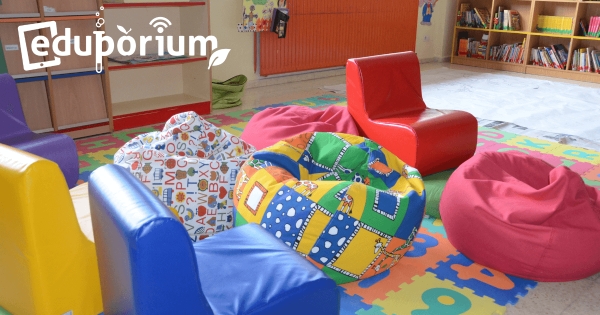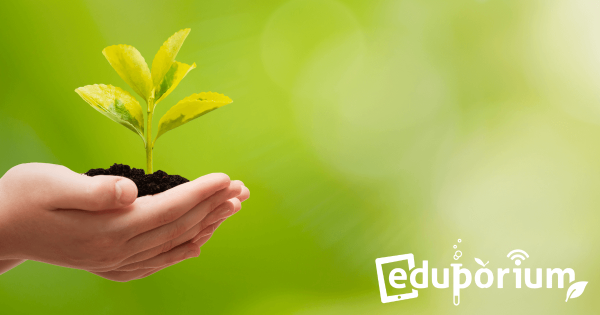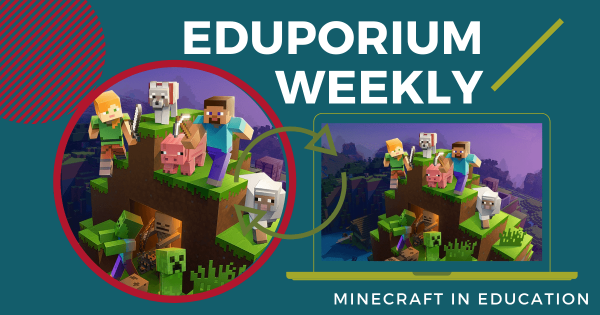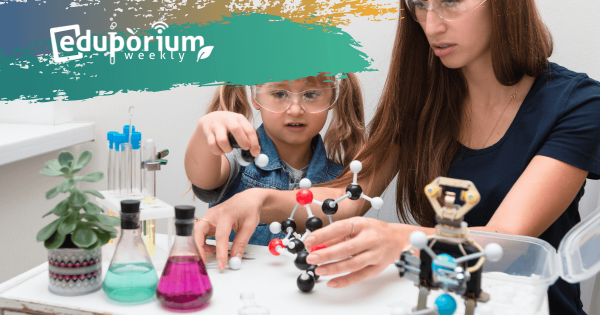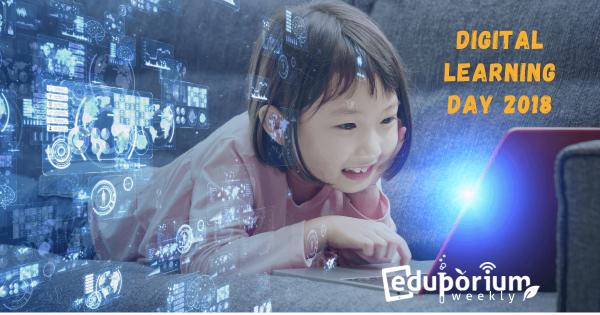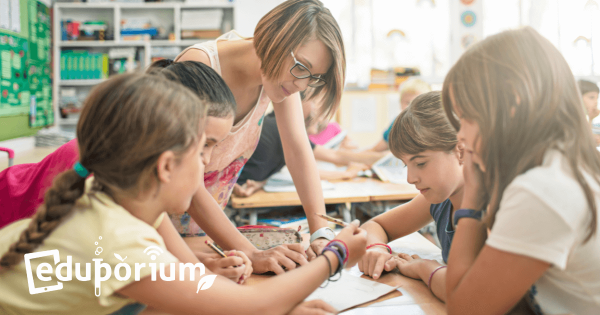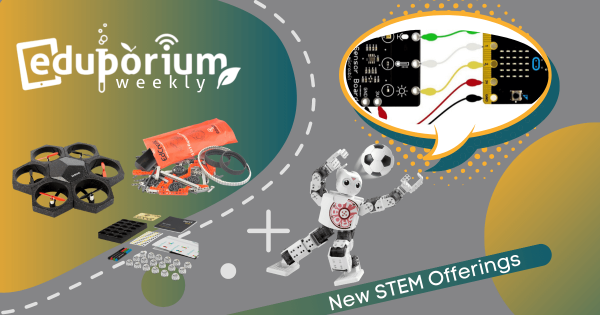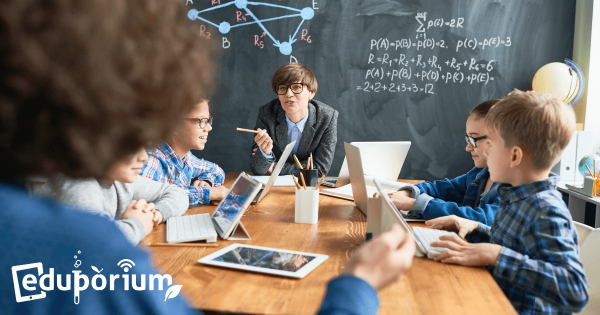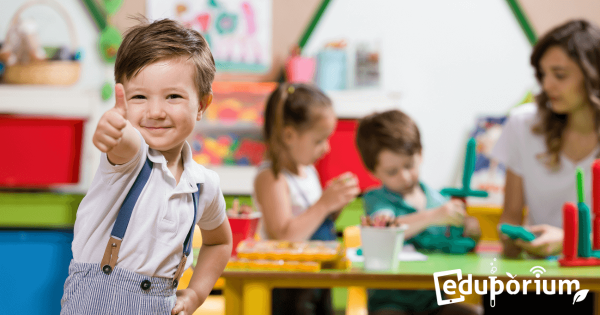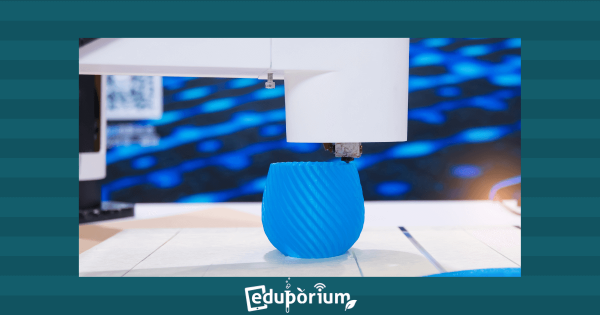In the 21st century, students belong in the driver’s seats of their learning experiences. Makerspaces are such a great option for educators. They provide a safe space for kids to fail, get creative, and use their interests to help them develop 21st century skills. Perhaps the best part of these environments is that there’s no wrong way to learn within
Eduporium Weekly
Our longest running current blog series, the Eduporium Weekly is your source for relevant education topics. Whether it's related to EdTech, STEM, SEL, makerspaces, soft skills, equity, CTE, or any number of other things, you are sure to find some relevant content here. Our team remains committed to providing intriguing and up-to-date opinions and perspectives on the most important topics—whether they're technology-based or not. Every week, we share our thoughts about those key topics in education. Giving educators a Saturday morning read, many of our Eduporium Weekly posts reflect recent happenings, important updates, or, sometimes, some fun revelations. We're also very fortunate to serve a community of such committed educators. For that reason, we strive to keep our thoughts and content fresh. And, this section of our blog is a great place to go for just that.
Whatever is happening in education, we believe our committed team members help educators adjust. As we've seen, technology has a place in all types of learning—as long as educators integrate it strategically. As debates and discussions in STEAM and general education evolve, we adapt this content to continually educate, inform, and entertain. Our perspective may be a bit unique but our collective expertise on these topics is always improving. We also encourage you to browse the pages or search for a topic of your interest on the left of your screen. We certainly take pride in being up to date with what teachers are experiencing. From our entire team, we hope this content truly provides you with guidance and inspiration. Check back every weekend, as well, for the latest edition of the Eduporium Weekly.
-
Eduporium Weekly | Going Green with STEM This St. Patrick's Day
We thought ‘Going Green’ and how teachers can lead STEM lessons that help promote environmentalism was a great topic for this week’s post. Not only does environmentalism help preserve our planet, but practice with eco-friendly initiatives can help students build STEM skills they can go on to use in just about any arena later on in life. -
Eduporium Weekly | Minecraft as a Legitimate STEM Tool
We all know that kids today love technology. Whether it’s tablets, smartphones, laptops, or whatever else they play with, once they hit nine or 10 years old, they seem to be glued to some sort of device. A lot of these children are sitting in front of computers and bettering themselves at the same time. That’s right—they’re playing Minecraft. -
Eduporium Weekly | Why Kids Shy Away from STEM
The economy is filled with vacant STEM jobs that not enough people are qualified to fill. For whatever reason, there are not enough college students pursuing STEM majors, like coding, robotics, engineering, and more. Could it be something as simple as not realizing that the STEM economy is where the jobs are? -
Eduporium Weekly | 5 Ways to Celebrate Digital Learning Day
Every February, the education community comes together for one day of future-focused learning. By celebrating Digital Learning Day, educators give their students the opportunity to experience learning that’s more geared toward the future and to try something new in the classroom. Best of all, there’s no wrong way to spend Digital Learning Day! -
Eduporium Weekly | Making PBL More Meaningful
When kids are sitting back, being spoken to, and completely passive about the content they’re absorbing in the classroom, how does that benefit them? They need active experiences and hands-on problem solving in order to become Future Ready. They need project-based learning and they need it to be of high quality. -
Eduporium Weekly | 5 New STEM Tools on our Store
We strive to make sure we’re offering the very best and the very latest in terms of EdTech products and, because of that, our store is constantly being updated. Whether it’s coding tools, VR, 3D printing, or something else, we love to stay on top of the latest trends in K-12 technology. Here are some of the newest technologies added -
Eduporium Weekly | Modernizing Education? Start with STEM
Everything educators do for their students should, in some way, be able to help them succeed in the future. This includes all of the lesson plans they create, the tools they bring into their classrooms, and even the attitudes they show, themselves. It will take a lot for students to fully prepare for a world we’re not too sure of, -
Eduporium Weekly | Using Tech to Help Students in Preschool
Generally, the common belief is that this should start around first, second, or third grade. What if it could start earlier, though? Like even as early as preschool. Those extra couple of years could wind up making a pretty large difference in the development of a child and, who knows, could ultimately help them reach greater heights. -
Industries in which 3D Printing Could Take Over
Engaging in 3D printing allows students to experience learning from brand new angles and put their creativity to use in ways that will legitimately help them prepare for their futures. Right now, scientists seem to using 3D printing for something new every day—in some industries that you would expect and others that are pretty surprising.




